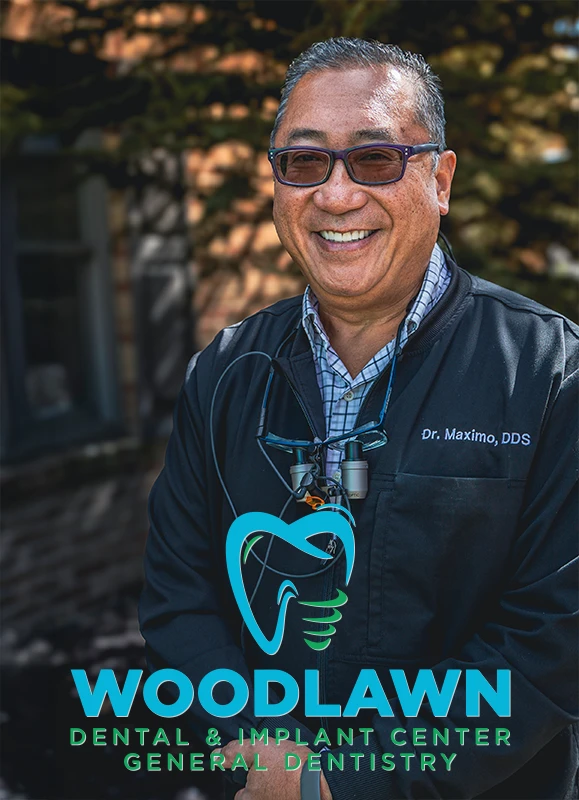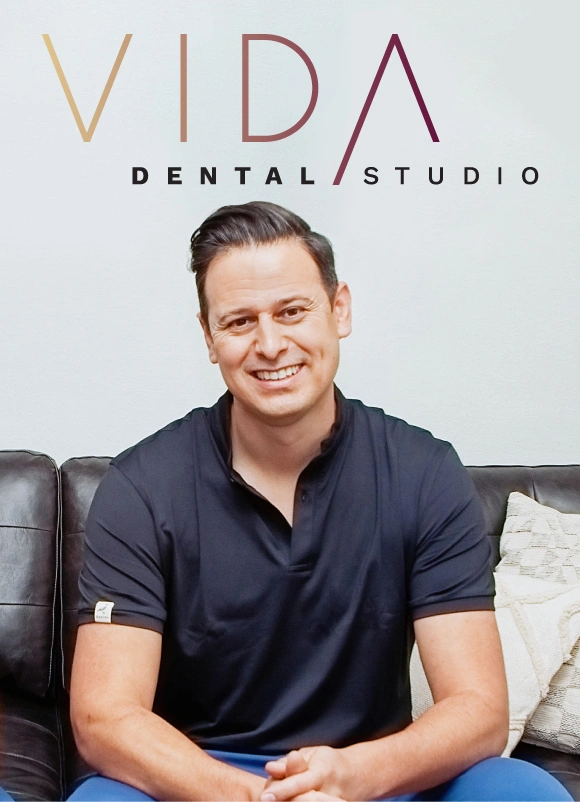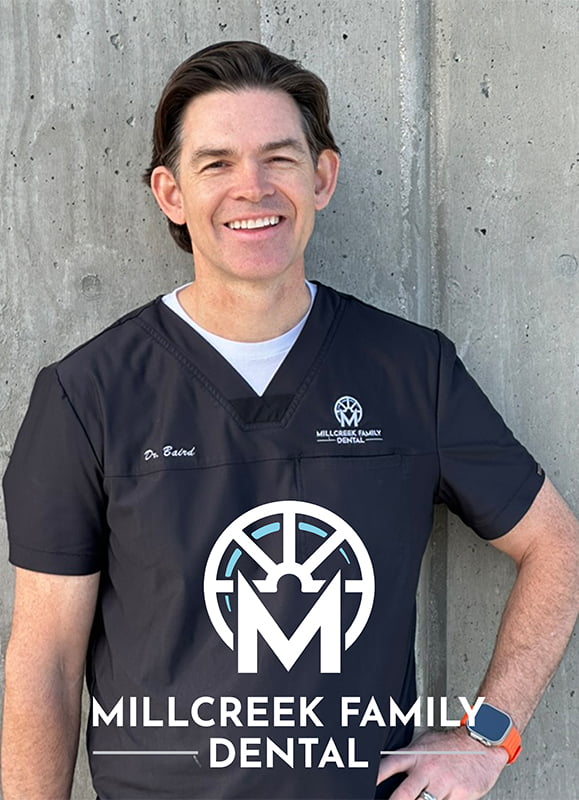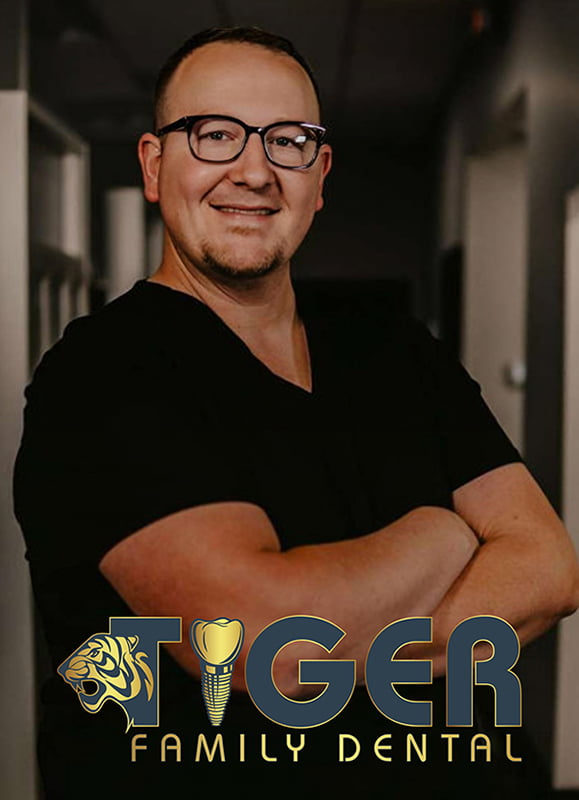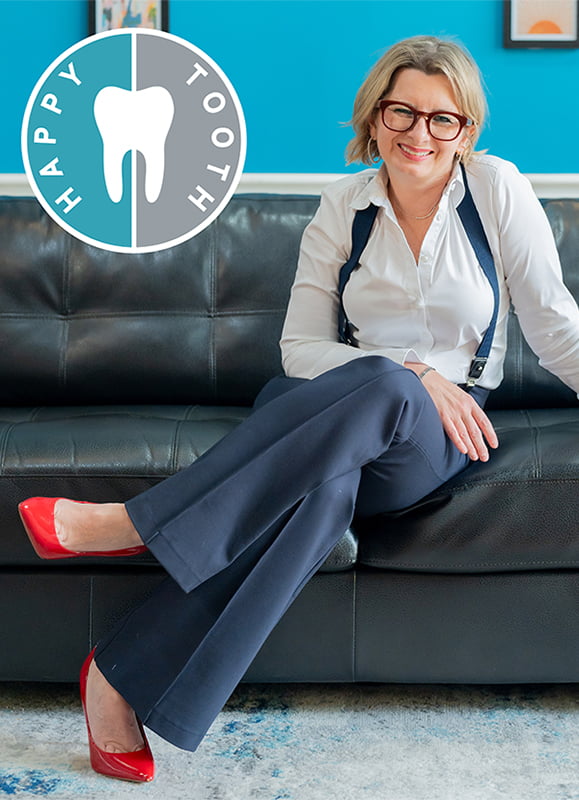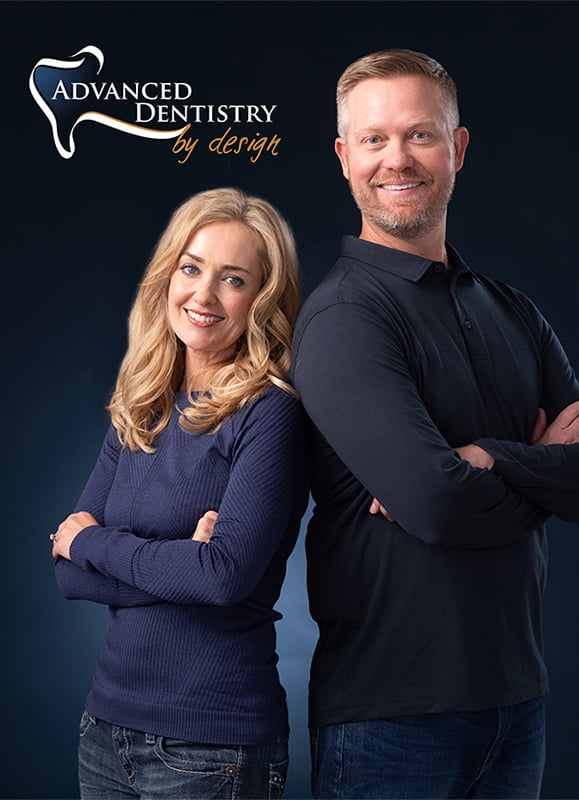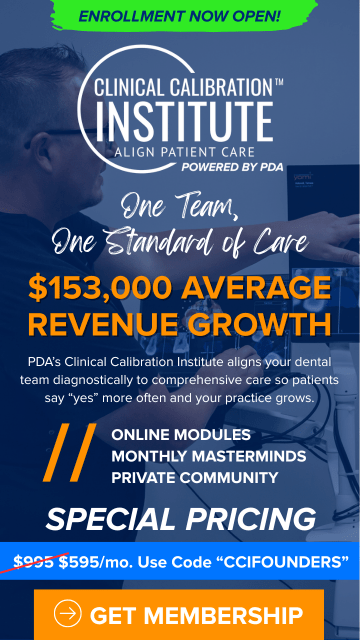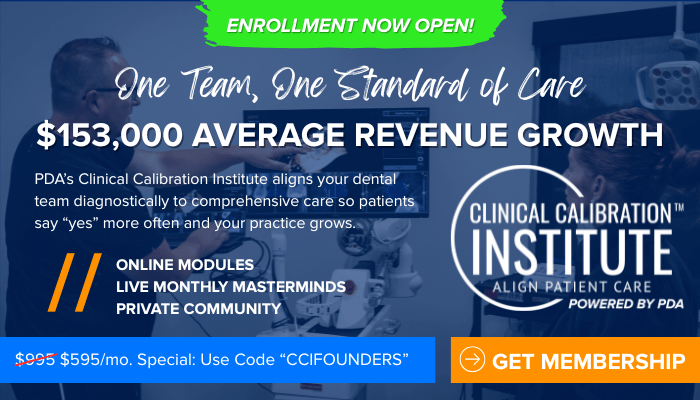Episode 203 – Requested Replay: The Power of Comprehensive Diagnosis
“There’s nothing that kills me more than a patient who has been strung along and is paying so much more than if they had just done it right the first time. ” ~Dr. Bruce B. Baird
There are two kinds of dental offices. One is running behind, the team is stressed out, the doctor is rushed, and they see a constant stream of patients who aren’t saying yes to their treatment plans.
The other office is on time, has a 100% engaged team, and the doctor sees their hard work reflected in their bottom line.
Here’s the difference: the first office is not diagnosing comprehensively. It’s not the highest and best for the patient. It’s stressful and it’s completely avoidable.
I’m here to tell you today that you can have the kind of practice you dream about: you run on schedule, your team is 100% engaged, you love to go into the office, and your numbers reflect the good work you do.
I can tell you it can be done and its being done all over the country with practices engaging in this comprehensive exam and communication process. So join me today as I share:
- A personal story about what a hygiene-first practice lost my practice
- Tips to making a hygiene-first office as productive as possible
- The impact comprehensive diagnosis has on case acceptance and patient loyalty
Never miss an episode! Subscribe on iTunes & Spotify. Visit us at http://www.productivedentistpodcast.com
EPISODE TRANSCRIPT
Regan
Hi, Doctor. Regan Robertson, CCO of Productive Dentist Academy here, and I have a question for you. Are you finding it hard to get your team aligned to your vision, but you know, you deserve growth just like everybody else? That’s why we’ve created the PDA productivity workshop. For nearly 20 years, PDA workshops have helped dentists just like you align their teams, get control of scheduling, and create productive practices that they love walking into every day. Just imagine how you will feel when you know your schedule is productive, your systems are humming, and your team is aligned to your vision. It’s simple, but it’s not necessarily easy. We can help. Visit productivedentist.com/workshop that’s productivedentist.com/workshop to secure your seats now.
Dr. Bruce Baird 1:54
This is Dr. Bruce Baird with Productive Dentist Academy and I’m going to be doing a little bit of a follow-up from our last podcast. I talked about case presentations and getting financial arrangements and how those fit together. My philosophy has always been about doing a comprehensive exam. What happens when you’re not necessarily doing comprehensive exams? Let’s say your new patients go through hygiene first, which I have to say if I had a large PPO-type practice, I’d haven’t gone through hygiene first. The only problem with that is, it’s really hard to schedule time with you. It’s really hard, for you to come in on a busy day, and spend the type of time necessary to build a relationship with a patient, to even get to know what the heck their name is. I mean, that’s, you know, it’s very difficult. That’s not to say that there are not some super successful officers out there that do it, it’s just not the way I chose to practice. Again, I’ve said before, I’m gonna work on my friends but let’s say your new patients, and you don’t have a lot of BP, but they go through hygiene first and I’ve seen that happen and one of my statements would be you probably have some pretty top-notch agendas that have a lot of experience and that kind of know what you like to do and, and so that can be helpful. I know that we had a 27% decrease in productivity when hygiene saw our new patients first and the reason that happened was somebody sent out a marketing deal that said to come in for a $180 Cleaning exam and X-rays.
Dr. Bruce Baird 3:44
I never approved it, it happened. That’s what happens in the office when your systems break down and all of a sudden, I started seeing the numbers go down. I’m very active when it comes to evaluating what’s happening in the practice and the first month I thought, okay, it’s just a trend. I didn’t realize we were even doing that special in hygiene and then the next month it dropped more and then the next month and I said what’s going on and I really got into it and investigated it. I wish I’d done it a month earlier or two months over and I found out that guess what, patients weren’t coming in just for a cleaning and I hadn’t had time to get in there to check them and my associates were in there talking to them and so I’m sitting in this situation saying, “Gosh, it really affected me.” What would the average treatment plan of a hygiene-driven production office be compared to one that’s doing a comprehensive exam? Now, a comprehensive exam, I’ve told you before, our average treatment time was 13,580 and an average hygiene-first-type office is probably going to be in the 2500 range. That’s not to mean that you couldn’t be at six and that’s not to say that if you were seeing all your new patients, your presentations might be six, not 13. So either way, there’s room to talk but, my biggest concern is the patient’s well-being. We know in the ADA Code of Ethics, we’re supposed to tell the patient what’s going on in their mouth and I said last time, there are people out there telling people just do one gram and see how it works and then they’ll, they’ll trust you, and they’ll come back. As a person, and I don’t know if you’re this way, but I am, I tend to be trusting and if I like somebody, I trust them immediately. I just do. I love being around people who communicate and I like getting to know them and then we become friends. Now have I been disappointed by friends? Yes, sure we all have but, that doesn’t mean that I’m gonna quit doing it this way just because of one person it didn’t work out. It’s like saying, I’m never going to do my own in-house financing because of one out of 10 defaults. When infact, I know with interest, I’m going to make a whole lot more money going that route. So kind of going back and, looking at this hygiene-driven type of practice and it’s, you know, to me, it’s unfortunate, but it’s also fortunate for us a PDA because I think I can help you get out of that situation but, the average treatment plan is $2,000 to $2,500. Well, when you’re at a $2,500 treatment plan, guess what insurance becomes very important, it becomes extremely important.
Dr. Bruce Baird 6:40
If you’re doing a $13,500, insurance becomes no problem. I’m just gonna say your insurance is gonna cover $1,500, I don’t have to worry about it. In our office when patients say it’s just, it’s because they don’t know what else to say. What will my insurance cover? It’s got to cover 1500 and we’ve got great financial arrangements that we can go over with the patients after they’ve accepted treatment and said, Yes, that’s what I want to do and then how am I going to pay for it? That’s, that’s the next question. So when I’m, when I’m sitting here talking to a hygiene-driven practice, you’re only doing $2000 to $2,500 treatment plans, you know, a crown here, maybe two, you know, and I’m not going to talk the PPO angle of that, because you might have to do four instead of just two but you’re not having the time to actually do a comprehensive exam, so it’s always, I’m going to do a quad evaluation and you come in which quadrant source. So it’s much easier to talk to a patient in a tight environment, in an environment that often runs behind, which runs your, your, your chairs behind and we’re the ones that who usually cause our hygienist to run behind. So you kind of combine those things. It was just not a good environment to go over. What are your needs? I really wouldn’t want again, my heart guy to tell me in the middle of a one-minute exam what’s going on. I’d rather have time, and truthfully, it doesn’t take that much but it’s truly scheduled time with me as opposed to I’m coming in when I can and I’m going to do the work.
Dr. Bruce Baird 8:16
Now what kind of financial arrangements are good for those types of patients? Again, we’re compassionate finance coming out with a new software called, Accept Care and it’s going to be pretty straightforward and easy. You know, they’re not, you know, for you that have hygiene-driven practices, it’s going to be easy because you just say this is what I would do, you print up the information. If they need financing for that, it is going to be $2,800. If you need financing, these are your options, and it prints it out perfectly. That gets a look at this option here, this option here, and this option here. I still you know, because you’re doing small treatment plans, you really do have to be concerned with how much your insurance covers. So, you know having some insurance verification ahead of time, there’s no reason why your hygienist every morning, should know all the details of each one of their patients that day about their insurance. You have insurance that doesn’t cover major procedures for two more years. You have this that pays for ortho and the whole team should know that, as far as that’s concerned. So once you have that accepted, once you have, once you know what they have, then it’s very easy to have the conversation. It doesn’t take long. Hygienists always go past I don’t have the time and I understand that. You don’t usually because your doctor is running behind, getting them to see you and then putting you behind, and then when you do catch up, it’s lunch. Then when you catch up, it’s at the end of the day. This is commonplace across the industry. I think it’s totally avoidable. I don’t think you have to be living that type of life because it’s stressful and when things are stressful, what happens to productivity? It goes down. You know, when things are not stressful, what happens to productivity? It goes up. I remember, you know, when I was running behind all the time and doing all this stuff, 25 years ago, yeah, I would actually downgrade. You know, I had them scheduled to do two crowns on the upper left and two crowns on the lower left and I was running so far behind, I said, “Bob, why don’t we just do these two up on top this time?” Why? Because I wanted to try to catch up because I hate being behind. So these are the things that, that I look at, I just want you to realize the difference in those two practices. The hygiene-driven practice really has lots of single teeth and quads that are diagnosed but not a full mouth and it puts a lot of stress on the hygienist to find more dentistry for me. Have you guys ever heard this? There are consultants out there that go I need you to find dentistry. Let’s start paying attention to the hard tissue. Let’s look at those cracks.
Dr. Bruce Baird 11:08
I don’t have to worry about that in my practice. I mean, I do a comprehensive exam. I tell him the first time I see him about the cracks. I tell him about the reason for the cracks. I tell him, you know, there’s somebody who bites it. Like me at 1000 pounds per square inch, not like the normal person at 185 pounds per square inch. I’ve explained to him why things are happening in their mouth. Really hard over here in the hygiene-driven practice because you don’t have the time to tell them, the hygienist doesn’t have the time to tell them and your dentistry becomes, I’m gonna say it, it becomes piecemeal, you’re gonna do whatever it is and again, those lectures out there saying, “Oh, yeah, no big deal, just do one at a time, and then they’ll get to know you and then they’ll want to have the other work done,” and the only problem is, they’re gonna be back in hygiene, you’re gonna find one more quad later and none of you, listen to this, would do your dental work if you needed eight or nine things done, would do your demo work over 15 visits, 20 visits over three years because what happens is, it gets worse and it becomes more costly. There’s nothing that kills me more than seeing a patient who’s just been strung along and is paying so much more than if they just did it right the first time. That’s the belief you have to have internally, to have the kind of practice that I think you dream about. You know, I sort of dreamed about a very low-stress practice, one that I didn’t run behind in the morning, I didn’t run behind at night. It was extremely profitable. I was able to do lots of charity cases because it was so profitable. My team was 100% engaged. I loved going to the office. Now that sounds like a utopia and if you’d asked me 25 years ago, I just said you are nuts and can’t be done. Well, I can tell you, not only can it be done, it’s being done all over the country with practices that are engaging with this comprehensive exam strategy and with this communication strategy and we’ve taught, we’ve taught thousands at Productive Dentist Academy over 18 years on how to do that how to have that kind of practice.
Dr. Bruce Baird 13:22
So anyway, that’s another Productive Dentist Podcast. I hope it’s been interesting. I hope it’s been something that’s engaging your mind. We have the workshop. So I would tell you, hey, get signed up and who should you bring? While everybody you want to keep and I hope to see you at a PDA workshop in the future. So have a good holiday. Thanks. Thank you for joining me for this episode of the Productive Dentist Podcast. If you found this episode helpful, make sure you subscribe and pass it along to a friend. Give us a like on iTunes and Spotify. Or drop me an email at podcast@productivedentist.com Don’t forget to check out other podcasts from the Productive Dentist Academy of productivedentistpodcast.com Join me again next week for another episode of the Productive Dentist Podcast
Have a great experience with PDA recently?
Download PDA Doctor Case Studies
